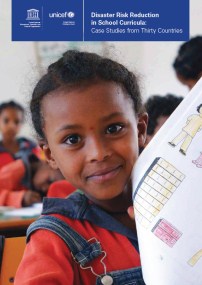Fumiyo Kagawa and David Selby have completed their consultancy to the joint UNICEF/UNESCO Mapping of Global Disaster Risk Reduction (DRR) Integration into Education Curricula initiative. Their remit was to ‘produce a comprehensive mapping of the integration of DRR in education sector policies, school curricula, and examinations together with mapping of learning outcomes in teaching and learning materials’. The fifteen-week, 12 September to 23 December 2011, consultancy involved annotation of key global, regional and national documents as well as scientific/academic papers, writing case studies of DRR integration in curriculum in some 30 countries around the world, and preparing an overview and detailed list of key competencies and learning outcomes for DRR in the curriculum across all levels of formal schooling.
The consultancy involved exploring the pros and cons of different approaches to the inclusion of disaster risk reduction (DRR) in the curriculum as well as policies, plans and strategies being used to promote integration of DRR in school curricula at regional, national and sub-national levels. Issues of policy development, curriculum development, pedagogy, learning and teaching materials development, assessment and professional development were addressed. The emphasis of the study was upon natural hazards and disasters while recognizing that the borderlands between what is natural and what is human-induced are both fuzzy and contested.
During the consultancy David and Fumiyo led workshops at UNESCO headquarters in Paris on two occasion: a one-day workshop in late-October 2011 and a two-day workshop on 8/9 December 2011. Their report, Disaster Risk Reduction in School Curricula: Case Studies from Thirty Countries, was published in 2012 by UNICEF/UNESCO.

